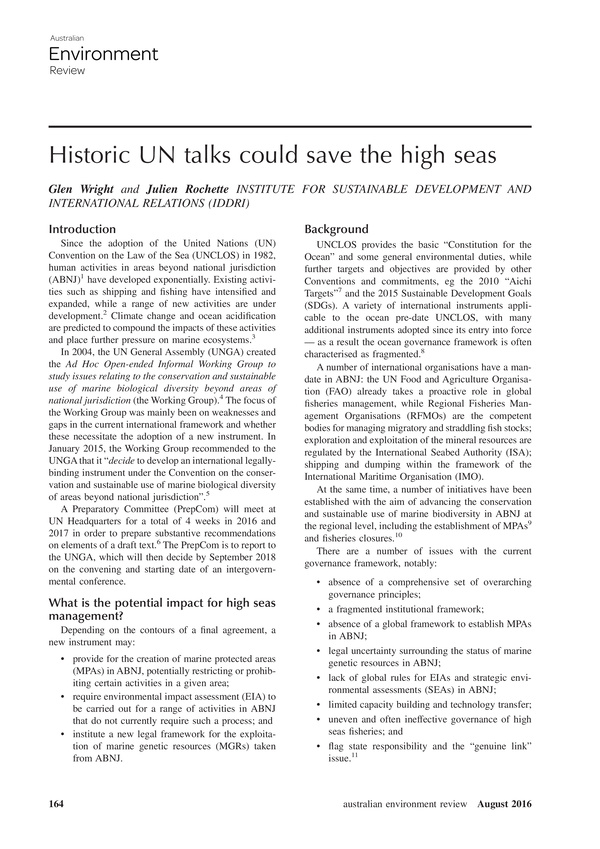Historic UN talks could save the high seas
Since the adoption of the United Nations (UN) Convention on the Law of the Sea (UNCLOS) in 1982, human activities in areas beyond national jurisdiction (ABNJ)1 have developed exponentially. Existing a...

Abstract
Since the adoption of the United Nations (UN) Convention on the Law of the Sea (UNCLOS) in 1982, human activities in areas beyond national jurisdiction (ABNJ)1 have developed exponentially. Existing activities such as shipping and fishing have intensified and expanded, while a range of new activities are under development.2 Climate change and ocean acidification are predicted to compound the impacts of these activities and place further pressure on marine ecosystems.3 In 2004, the UN General Assembly (UNGA) created the Ad Hoc Open-ended Informal Working Group to study issues relating to the conservation and sustainable use of marine biological diversity beyond areas of national jurisdiction (the Working Group).4 The focus of the Working Group was mainly been on weaknesses and gaps in the current international framework and whether these necessitate the adoption of a new instrument. In January 2015, the Working Group recommended to the UNGA that it “decide to develop an international legallybinding instrument under the Convention on the conservation and sustainable use of marine biological diversity of areas beyond national jurisdiction”.5 A Preparatory Committee (PrepCom) will meet at UN Headquarters for a total of 4 weeks in 2016 and 2017 in order to prepare substantive recommendations on elements of a draft text.6 The PrepCom is to report to the UNGA, which will then decide by September 2018 on the convening and starting date of an intergovernmental conference.
Publication Details
Authors: Glen Wright, Julien Rochette
Venue: Australian Environment Review Year: 2016 Pages: 164–167